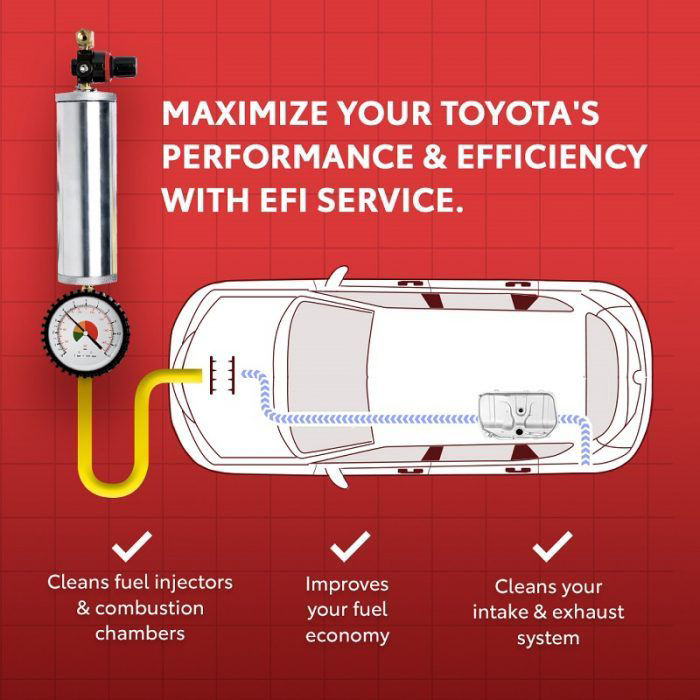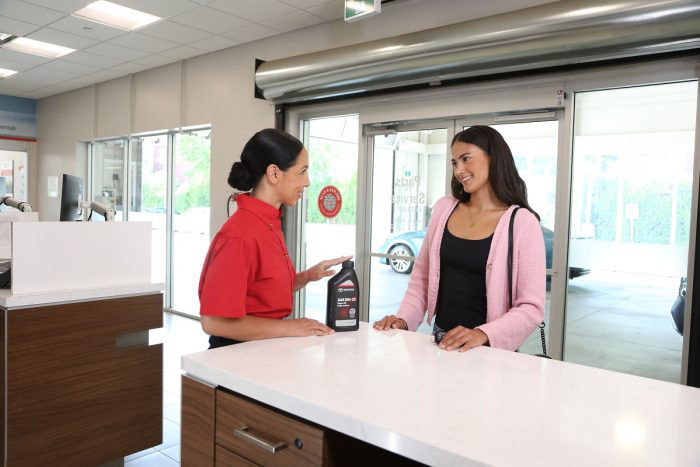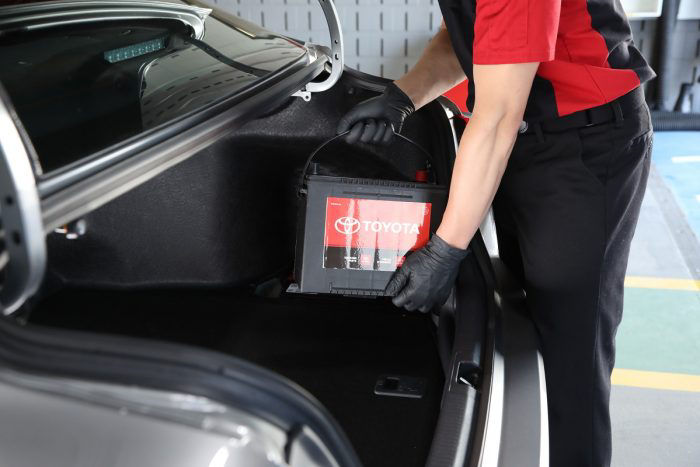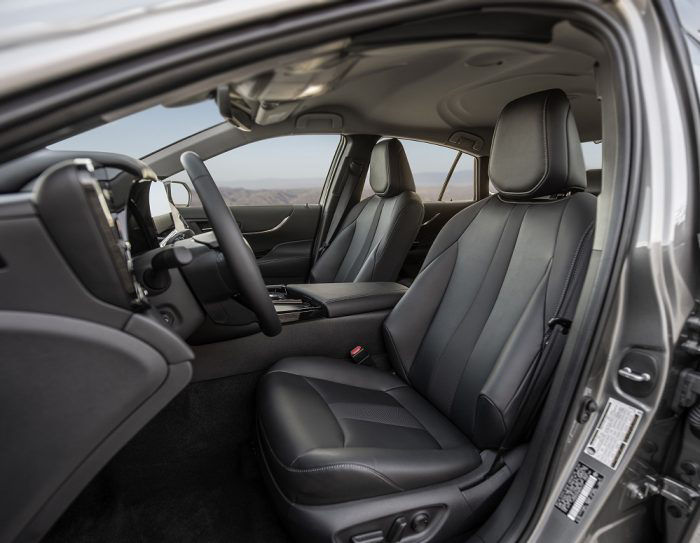Select a province & language
Entrance to this website assumes you have read and agree to these Legal Terms and Conditions and the Privacy Policy.
Entrance to this website assumes you have read and agree to these Legal Terms and Conditions and the Privacy Policy.
Your Toyota’s fuel system, cooling system, battery and tires all play a role in maximizing fuel economy. We’ll take you through some helpful tips to ensure that the engine is not burning excess fuel, helping your vehicle last longer and making your drives more efficient.

Ever wonder how dust, dirt, and oil buildup can sneak into your vehicle’s engine? As you drive, pollutants can enter the engine compartment and cause buildup, compromising your vehicle’s fuel efficiency and performance – especially during long drives. At your next maintenance appointment, your Toyota University Trained Technician can use a Fuel System Cleaner to remove these unwanted contaminants. For even better engine performance on long drives, consider requesting a Combustion and EFI Systems Cleaner Service. Here’s an inside look at the two-step process:
Optimizing the amount of heat loss through your vehicle’s cooling systems, including the engine system and air conditioning, is another way to improve fuel economy. Depending on the type of vehicle, the cooling system is designed with multiple circuits that regulate engine, battery and cabin temperature, prevent overheating and ensure the entire system is functioning properly. During a maintenance appointment, Toyota University Trained Technicians will ensure your cooling system fluids are topped up, so that your vehicle isn’t burning excess fuel.

Here’s an interesting fact: A weak or failing battery can put extra strain on your alternator, making it work harder and consume more fuel to keep the battery charged. This extra work can negatively impact your vehicle’s fuel efficiency. To keep your ride fuel-efficient, make sure your battery is in good condition. Before heading out on a long trip, your service advisor will recommend a battery health check to ensure it is ready for the journey.

Did you know that properly inflated tires can reduce friction, and in turn, boost fuel economy? Plus, properly inflated tires are safer and last longer— a win for you and your Toyota!
Now, let's talk rolling resistance. An underinflated tire uses more energy to keep your vehicle moving steadily, thereby increasing fuel consumption. On the flip side, lower rolling resistance means your engine works less, enhancing fuel efficiency.
Pro Tip: Refer to the Owner’s Manual or the label inside the driver’s door frame for your vehicle’s factory-recommended tire pressure, rather than relying on the number printed on the tire's sidewall. The optimal tire pressure is based on the specific design and weight distribution of your vehicle, which takes into account factors like load capacity, ride comfort, alignment and handling characteristics.

Seasonal Maintenance Tips for Your Toyota
What to Expect in Your Service Journey
Beat The Heat with These Summer Driving Tips
Plus, be sure to register for email updates from Toyota Canada. You’ll receive personalized vehicle information, exclusive offers and more, right to your inbox.